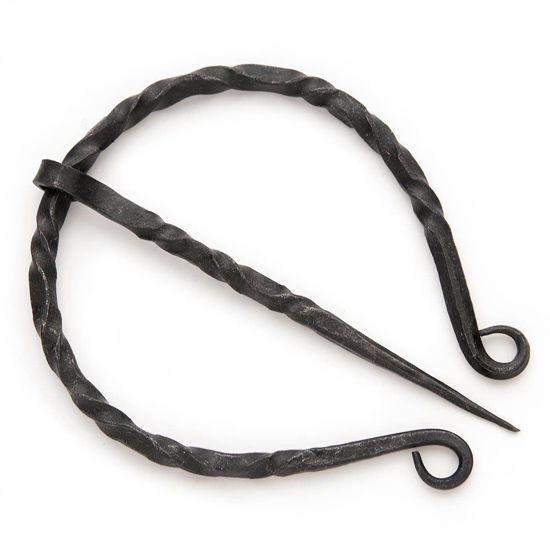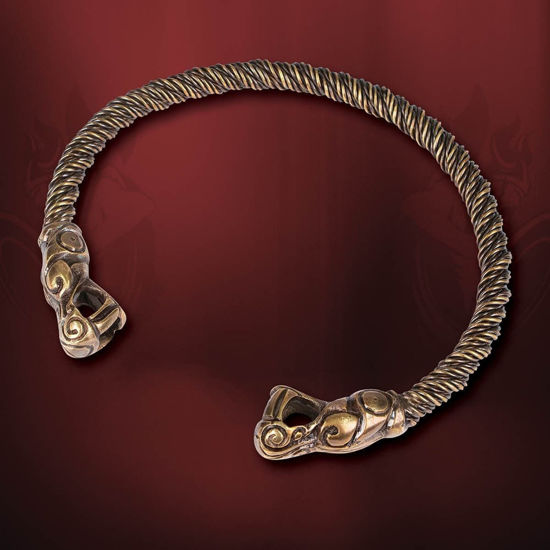The Viking age was notorious for the prevalence of pillaging and raiding. Practically no coastal settlement was safe from the hoards of Norsemen crossing the high seas in their long-boats, wrecking havoc on the people they pillaged, and draining them of their resources, and in particular, gold and silver. Jewellery, and other fineries, were as intwined with the culture as the pieces themselves, being used as status symbols, decoration, and even currency. A surprising number of archeological finds suggests that many of these pieces were not war bounty, but trade goods from across Europe and beyond. Viking jewellery was very much seen by them in the same way we see our own valuables - an asset of exceptional wealth, prestige and beauty - and some of the best evidence we have for their skilled craftsmanship and unique culture.
One of the most common types of Viking jewellery were brooches: ornamental pins or catches with which one can fasten their clothing. These were worn by both men and women, despite their more feminine associated in contemporary fashion. A common piece thanks to their utility, numerous intricate designs can be found on many artefacts, such as animals, knots, or various geometric shapes, and almost always made from some form of metal. The Penannular brooch was favoured by men, being a circular band with a pin though the middle. This was adopted from the Celtic tribes of Scotland and Ireland. The Oval brooch, which is much more akin to what you may see today, is a more decorative piece which covers the pin, and was worn by women. The Oseberg ship burial, discovered in Norway, contained several ornate brooches, including the famous Oseberg Brooch, which is made of silver and decorated with filigree.
Arm rings are a unique part of Viking culture, being worn on the upper arm as a symbol of wealth and power. Arm rings were made of various materials, including silver, bronze, and gold, and were often forged with geometric patterns, but many were simple bands. They could either fit only 3/4 round the arm, or wrap around it multiple times, as both types leant themselves to be easily broken down for use in trade; the norse seem to have always been a practical bunch. The Galloway Hoard, a collection of Viking-age artefacts discovered in Scotland, contains several examples of intricate arm rings. Rings were also commonly worn and used as currency by Vikings, both finger and neck rings. The former weren’t popular until the later Viking age, with many being designed to fit different sized fingers by being open-ended loops rather than fully closed rings.
Necklaces and pendants were also popular among Vikings. Necklaces were made of various materials, including beads and metal chains, and often featured pendants. In contrary to contemporary bead necklaces, these were highly sought after as a result of the rarity of the stones. Amber, jet, and other crystal rocks were most likely traded for with loot gained from pillaging, whilst glass beads were forged, being a very laborious process. Metal necklaces were more common and, of course, designed to be used in commerce, with both genders opting to wear them. The Birka grave, discovered in Sweden, contained several necklaces made of glass and amber beads, as well as a silver pendant decorated with filigree.
No cultures jewellery would be complete without some religious significance, however. Thor's hammer, Mjölnir, was often worn as an amulet to derive divine protection. The hammer was commonly depicted in jewellery, including pendants, brooches, and rings. The Mammen Axe, discovered in Denmark, is a silver-inlaid Viking axe with depictions of Odin and Thor, and is considered a masterpiece of Viking art.






